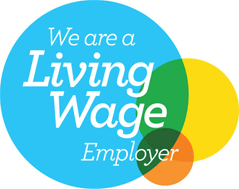


The Coronavirus Job Retention Scheme (furlough) ended on 30 September 2021.
Furlough leave was part of the Coronavirus Job Retention Scheme and offers support to employers to save jobs during the Coronavirus crisis. Our expert Employment Law solicitors answer your questions about what this means and detail their furlough advice for employers. For FAQs for Employers about the Extended Coronavirus Job Retention Scheme click here
This article was updated on 17 November 2020.
It applies to all businesses in respect of employees (which includes workers) who under the original scheme were on a PAYE scheme on 19 March 2020. It includes companies, charities and public sector organisations.
Furlough just means a “leave of absence”. Find more information about what is furlough leave here.
It applies to full-time, part-time, agency and zero-hours employees and workers, and apprentices as long as they are paid through PAYE.
Under the original scheme, they offered to re-imburse 80% of furloughed employees’ usual monthly wage costs up to £2,500 a month, plus the associated Employer National Insurance Contributions and minimum automatic enrolment employer pension contributions on that salary.
From 1 August, the Government covered the cost of wages but employers were asked to pay employer National Insurance and pension contributions.
On 1 September, the Government dropped its contribution to 70% of wages, and on 1 October, the Government’s contribution dropped to 60%. The employer was expected to top up the reduced grant so it is made up to 80% of salary or the cap.
Under the new extended furlough scheme, you can claim 80% of furloughed employees’ usual salary up to a maximum of £2,500 a month until 30 June 2021. You are still required to pay for employer National Insurance contributions and pension costs.
From 1 July 2021, this will be reduced. Between 1 July – 31 July, you can claim 70% of an employees’ usual salary, and you must top this up to 80%. From 1 August 2021, this contribution will drop to 60% and you will be required to make this up to 80%.
No. As long as the decision to furlough relates to coronavirus-related circumstances.
No, it is a grant not a loan.
The Government has set up an online portal which went live on 20 April. You can use the portal to claim the grant. You will have to provide all the information about your claim; the number of furloughed employees, NI numbers etc and will also have to calculate what you are claiming for each employee.
Under the original scheme, you could claim 80% of the amount paid in the same period in the previous year or an average over the previous 12 months, whichever is the higher.
This was reduced to 70% on 1 September 2020 and 60% on 1 October 2020.
The extended Coronavirus Job Retention Scheme again allows employers to claim 80% until 30 June 2021. This will be reduced to 70% from 1 July – 31 July and 60% from 1 August 2021. From 1 July 2021 onwards you will be required to top this up to 80% of pay.
Under the original scheme, the first payments were made after 30 April.
A claim can only be made every 3 weeks.
Under the original scheme, your employee couldn’t do any work but they could attend training or volunteer.
From 1 July, your employees that had been furloughed by 10 June could work for as many hours as you needed them and you would be able to claim the Coronavirus Job Retention Scheme grant. For example, if a full time employee works for you for 2 days they receive normal pay and you can claim the 80% of your employee’s wage for the other 3 days. This scheme closed to new entrants from 30 June as you would have only been able to claim for employees that had been furloughed for a full 3 week period.
No, while your employee retains a contractual right to full pay, by agreeing to be furloughed they are agreeing to a variation of their contract for the period of the furlough.
The scheme does not cover other contractual benefits. You will remain liable for other contractual benefits unless your employee agrees to waive or defer them.
No. You will need your employee to agree to the arrangement. This is essentially a temporary variation of their contract of employment for the duration of the scheme, or whatever period you decide to keep a particular employee on furlough leave.
If you do not have sufficient work for your employee then there is likely to be a redundancy situation. You can make them redundant but you still need to ensure that you follow a proper process, particularly if your employee has more than 2 years’ service.
Yes – but an exchange of emails would be sufficient.
It is likely that taking furlough leave will be a popular option for your employees and there is a real risk of tension if some employees do no work for 80% of their salary, and others have to work, particularly if requiring them to work exposes them to additional risk. Volunteers should be sought in the first instance. If you have to narrow it down you could adopt a straightforward “matrix” selection process. You should keep the process transparent and objective to avoid any arguments of discrimination.
It is likely to be justifiable to discriminate on the basis of age and in relation to individuals with underlying health conditions. This is the case whether or not they would be considered to be disabled for the purposes of the Equality Act. A “healthy” employee has no cause of action under the Equality Act if she is passed over. You should however be alive to the fact that someone with a mental health condition might also be “vulnerable” in the circumstances.
The furlough period has to be for a minimum period of 3 weeks, therefore there is nothing to stop you rotating employees every 3 weeks. While this is potentially better for industrial relations it somewhat undermines the object of reducing the number of people in circulation.
Under the original scheme, this was possible. However, the new extended CJRS does not allow for this. Please see here for more details.
Staff who are in receipt of Statutory Sick Pay or contractual sick pay can be put on furlough leave once they have recovered and would otherwise have returned to work.
The original guidance indicated that doing anything which provides services to, or generates revenue for the business is prohibited while on furlough leave. Flexi-furlough was then introduced. There seems to be no reason why you could not progress a disciplinary or grievance process whilst an employee is on full or flexi-furlough leave.
Many employers are now compelling employees to take annual leave while on furlough, mainly to prevent them accruing months’ worth of holiday being due when they return to work or their employment ends.
The Government has published guidance, which supports the view that employers can compel employees to take holiday during furlough.
The relevant part of the guidance states:- “If an employer requires a worker to take holiday while on furlough, the employer should consider whether any restrictions the worker is under, such as the need to socially distance or self-isolate, would prevent the worker from resting, relaxing and enjoying leisure time, which is the fundamental purpose of holiday.”
The Working Time Regulations 1998 reg 15 makes it clear that you can insist on your employee taking annual leave on particular dates, as long as they give twice the number of days’ notice that they want the employee to take as holiday. So, for example, an employer needs to give two weeks’ notice to require their employee to take one week’s annual leave.
In practice, this means you can furlough your employee for three weeks and tell them at the start that the third week is annual leave. By definition, this then means they’ve given the required two weeks’ notice of the one week’s annual leave.
Your employee is entitled to be paid their ‘normal remuneration’ when on their first four weeks of annual leave. This has been interpreted in numerous cases as including overtime, allowances, commission payments and contractual bonuses. That’s because the law should not allow employees to be disincentivised from taking annual leave by paying them less on holiday than they would be when at work.
In contrast, the Coronavirus Job Retention Scheme (CJRS) specifically excludes commission, fees, and bonuses from the amount HMRC will reimburse. As the CJRS only pays 80% of base salary, there has been uncertainty as to what has to be paid for holiday pay. We would advise that you should pay your employee taking Annual Leave while on furlough their normal pay which includes bonuses, commission, and allowances.
Not for you as the employer but they can for another organisation. Up until 1 July, employees and workers could not carry out any work if furloughed. As working part time is permitted from 1 July any work should be paid.
Furloughed employees can attend training under the Employers CJRS guidance and the Treasury Directions. The CJRS guidance says this is as long as this is not used by the employer to generate revenue.
The Treasury Directions are more limited and the exception is training “directly relevant to the employee’s employment”. There is also reference in the Treasury Directions to there being agreement about training but not specifically in writing. We would however recommend that the safest route is to secure employees’ written agreement in their Furloughing Agreement to undertake training.
The original furlough scheme ran until the end of July 2020. From 1 August to 30 October 2020, employers were expected to contribute to the costs. Also, furloughed employees could be brought back part-time. The Extended Coronavirus Job Retention Scheme was announced on 5 November to continue until 31 March 2021. On 17 December 2020 the furlough scheme was extended until 30 April 2021. In March, this scheme was extended until 30 September 2021.
Employees who are shielding are entitled to Statutory Sick Pay (SSP) if they cannot work from home. This came into force on 16 April.
The Acas guidance currently states that you are entitled to furlough employees who are unable to work because they are shielding, in line with public health guidance.
As shielding employees are now entitled to SSP, if they are unable to work from home, the Treasury Direction seems to be that your employee cannot be furloughed while they are entitled to SSP, (whether or not they are actually receiving SSP).
There is, therefore, a risk that you will not be able to recoup the furlough pay of a shielding employee which you place on furlough under the terms of the Coronavirus Job Retention Scheme.
The position is different if your employee is shielding and able to work from home because that category of employee does not qualify for SSP. The deemed incapacity provision require that your employee is unable to work due to their isolation.
We would argue that those shielding employees who were furloughed before 16 April 2020, who were not entitled to SSP, should result in you as the employer being able to claim under the CJRS.
For expert advice on furlough leave and the Coronavirus Job Retention Scheme, contact our Employment Law Team on 01273 609911, or email info@ms-solicitors.co.uk.
Martin Searle Solicitors, 9 Marlborough Place, Brighton, BN1 1UB
T: 01273 609 991 info@ms-solicitors.co.uk
Martin Searle Solicitors is the trading name of ms solicitors ltd, which is authorised and regulated by the Solicitors Regulation Authority, and is registered in England under company number 05067303.
© 2025